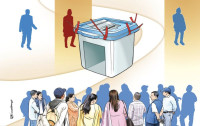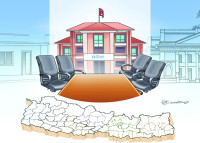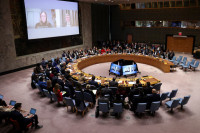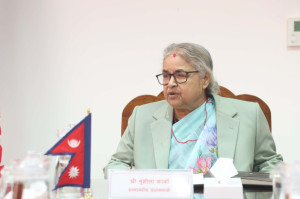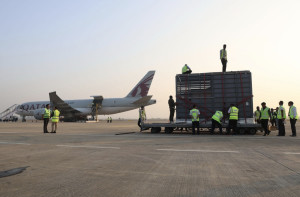Columns
Meeting our commitments
New view towers, built to encourage tourism, don’t fit into the economic worries of the hills.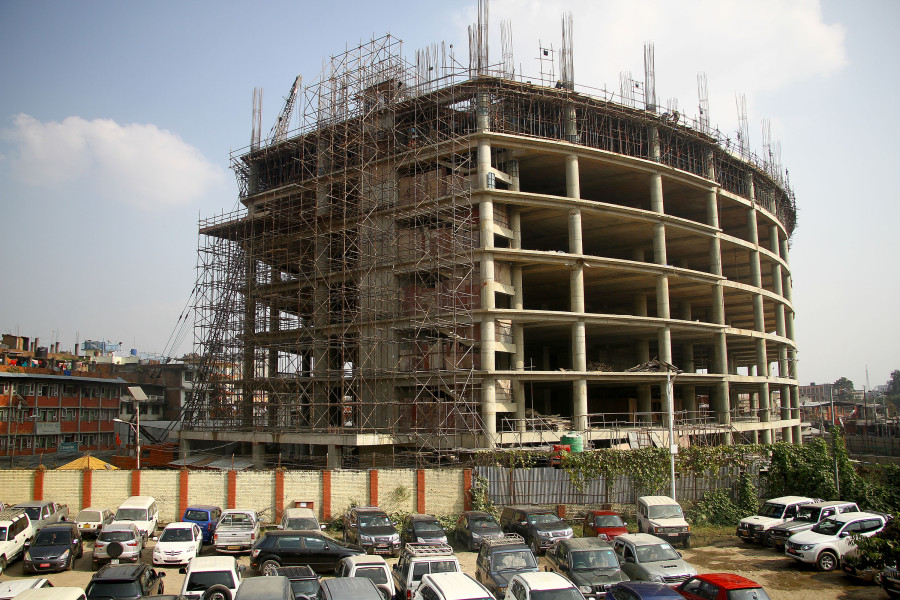
Madhukar Upadhya
The countdown for Nepal to complete climate mitigation projects, committed to the enhanced Nationally Determined Contributions (NDCs), by 2030 has started, with a year having passed without much effort dispensed. The five key energy, agriculture, forestry, industry and waste management projects are identified as conditional mitigation projects estimated to cost about $25 billion—money that we need to access from international sources. An inability to access this amount, perhaps the biggest undertaking we’ve ever attempted, will hamper our national commitment to contributing to global efforts in limiting global warming within 1.5 degrees Celsius. Climate projects, after all, are nothing but development projects designed to achieve focused goals of emission reduction and adaptation, which often require new technology, increased capacity, or even different ways of conducting business. Unfortunately, our bungled understanding of national development needs over the years sets uncomfortable precedence for how we may not be prepared for this most important enterprise.
Coordination among institutions and sustained political consensus is fundamental to continuous guidance while pursuing national commitments. Robust institutional mechanisms and good governance are preconditions for accessing and managing such an enormous amount. Unfortunately, none of these prerequisites seems to exist to the extent required in Nepal’s present context. For example, we could acquire only 9.5 percent of the expected $2.1 billion loans in seven months of the current fiscal year for regular development programmes. Our expectations far outweighed our capacity. Without consensus and improved governance, any improvements meant to be derived from these institutions won’t translate to the real world. For instance, it’s painfully clear that our development efforts in recent years haven’t made a lick of difference in the lives of most civilians.
A striking example of this is the increasing number of migrant workers—we have continually failed to generate employment opportunities at home for decades. Our mounting food import bill is a glaring reminder that we’ve also failed to produce enough to feed our people. Unfortunately, these woes fall on apathetic ears; our political leaders seem to have a different notion of development.
Re-defining development
When KP Sharma Oli, the longest serving prime minister in the last two decades, talked about his achievements during his three-year tenure, he often cited the stretches of new roads added to the road network and the restoration of earthquake-damaged public properties like Rani Pokhari and Dharahara as the key achievements of his administration. Absent from his boasts was how many additional jobs were created or to what extent the widening trade deficit had been addressed. What about the initiatives needed to discourage the depopulation of the hills, a phenomenon with significant, long-term implications for our hills’ sustained development that remains severely overlooked? A failure to address specific problems in the hills will only lead to further underdevelopment.
Local governments responsible for implementing development programmes at the local level are no different. New view towers, built to encourage tourism, don’t fit into the growing economic worries of the hills. To illustrate, several districts, from Sindhuli to Gorkha, have reported the loss of citrus trees due to disease over vast areas. Oranges, in particular, are a major source of cash income for many farmers in the middle hills, fetching tens of millions of rupees on land unsuitable for other crops. Regretfully, they’ve gradually lost this income over the last decade.
Local water sources such as springs and streams, the lifeline of village livelihoods, have dried in many places in recent decades; many families have moved away due to lack of water. People in the hills face these growing problems, yet no efforts have been made to remedy them. Addressing these issues doesn’t come under the purview of our traditional development framework because concrete structures have become synonymous with development which is likely to do with the large sums of money involved.
Furthermore, policies and acts introduced to help regulatory institutions, including Parliament, conform to their expected roles have been unsuccessful, indicating the level of erosion of our governance system. Now the big question: How will these institutions, with their history of weak governance, play their influential roles in implementing the NDCs to address complex issues such as the impacts of climate change on multiple fronts?
Once again, looking to the inherent disconnect of infrastructure projects, the state never assessed whether they’d help achieve the specific objectives of improving the material living conditions of citizens and strengthening the local economy. On the contrary, the collapse of several major bridges, still under construction, over the last decade demonstrates the quality of our infrastructure and the corruption and misuse of resources characteristic of said construction projects. Many remain incomplete for years. Even black-topped roads become full of potholes within a year due to poor construction.
Nepal’s prosperity isn’t possible without innovative opportunities for employment, enhanced farm productivity, and a reinvigorated grip over the available resources. In that sense, we have measurably failed in connecting our development programmes with what’s required to improve the livelihoods and lives of people. Even small, local initiatives that help correct the situation inspire a sense of elation as in the case of Bhupendra Rai, the chairman of a rural municipality in Khotang, who tweeted about a desire to transport lemons he’d produced on his farm to be sold in the market on a truck that delivers beer and instant noodles to his village. This sentiment resonates with the findings of a study in the 1980s which highlighted the overwhelming dependence upon imported, manufactured goods coupled with a decline in local skills and ecosystems, which collectively exacerbated underdevelopment.
Re-orienting focus
One must bear in mind that, unlike many past projects financed through international funds, which donors managed in partnership with the government, the funds that we expect to mobilise for the NDCs will have to be managed by the national government. Will our institutions manage these highly complex challenges, from accessing funds to the timely implementation of programmes? If not, we must enable our institutions within the available time frame to re-orient their focus from our established, flawed development to the national commitments made through the NDCs. Given how we have failed to deliver growth so far, the required reorientation to fulfil climate commitments won’t be easy. Furthermore, we don’t have the luxury of time. We have to access and mobilise international funds and implement the stated conditional projects on time in the next nine years. More importantly, we must achieve the crucial goal of protecting the lives and livelihoods of our citizens from the impacts of a dramatically changing climate.




 6°C Kathmandu
6°C Kathmandu
